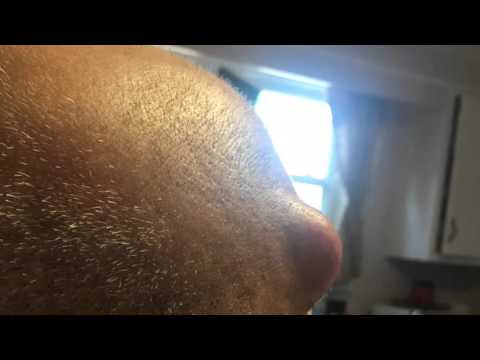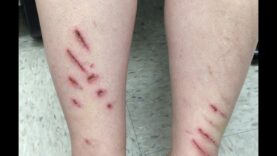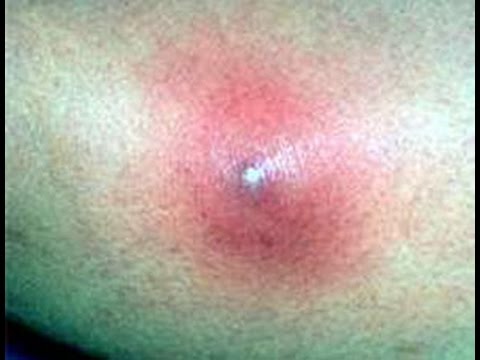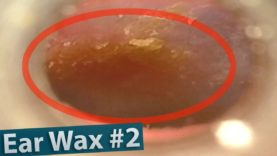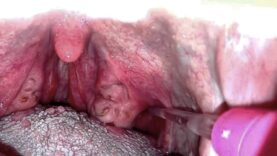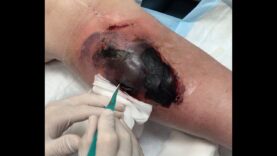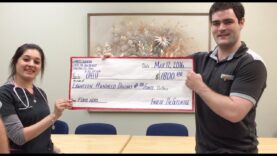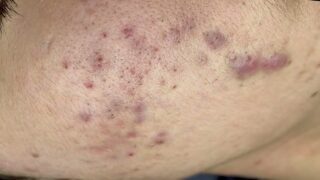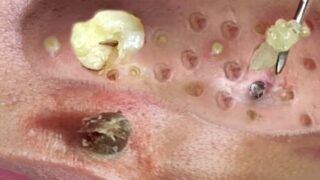A recurrent cyst removed via punch biopsy tool
This wonderful patient came from a little of a distance to see me because she has a cyst that has been squeezed and excised previously but has reoccurred each time.
As you may know, cysts that have been manipulated or partially removed in the past can often be more difficult to remove because there can be scar tissue, or the cyst itself can be more misshapen under he skin.
However upon exam in this case it really looked like this cyst was pretty superficial and I could see the punctum/opening, so I decided to see whether I could use a punch biopsy tool to remove the area somewhat easily. Partly because I knew she came from a little distance and I didn’t want her to “waste” a visit if I had a little time to do this. I think/hope it was a success! I DID get a little of the cyst get in my hair which is completely my fault and NOT the patient’s. That’s a little of a bummer for me, but I always remind myself I should be thankful it didn’t get in my mouth or eye! 😜
She was a wonderful patient and I hope the cyst doesn’t grow back! Thank you for watching!
An epidermoid cyst (Epidermal Inclusion cyst, Infundibular cyst), is a benign growth commonly found in the skin and typically appears on the face, neck or trunk, but can occur anywhere on the body. Another name used is “sebacous cyst” but this is actually an antiquated misnomer, and is not a term used by dermatologists. They are also the most common type of cutaneous cysts. Epidermoid cysts result from the reproduction of epidermal cells within a confined space of the dermis. The pasty contents are mostly composed of macerated keratin (wet skin cells), which creates this “cheesy” consistency, and there can be a pungent odor. An epidermoid cyst may have no symptoms and are typically harmless. Usually people seek removal but they don’t like the appearance of these bumps, or the cyst has ruptured or been inflamed or “infected” in the past. Rupture is associated with sudden redness, pan, swelling, and local heat, and can lead to abscess formation. Also, a history of inflammation, often increases scar tissue in the area, makes the cyst more firmly adherent to surrounding skin, and makes it more difficult to remove. Surgical excision is curative, but the complete cyst removal including the entire cyst sac and contents need to be removed to ensure that the cyst won’t reoccur.
Subscribe to my Dermatology educational channel, Dr Pimple Popper University! Link is here:
https://www.youtube.com/channel/UCvaD01Jb_ruxsAcVqVmTHzQ
For more content, exclusive content, and of course to get your Dr. Pimple Popper schwag, visit us at www.drpimplepopper.com!
Instagram:
@DrPimplePopper for 24/7 pops
@DrSandraLee for my work, my life, my pops
Facebook: facebook.com/DrSandraLeeDermatology
Twitter: @SandraLeeMD
Snapchat: drpimplepopper
Periscope: Dr. Sandra Lee
You can watch my TV appearances here:
https://www.youtube.com/channel/UCOixDRVQAsKe4STSuWU8U0Q
This video may contain dermatologic surgical and/or procedural content. The content seen in this video is provided only for medical education purposes and is not intended to be a substitute for professional medical advice, diagnosis, or treatment.
source

